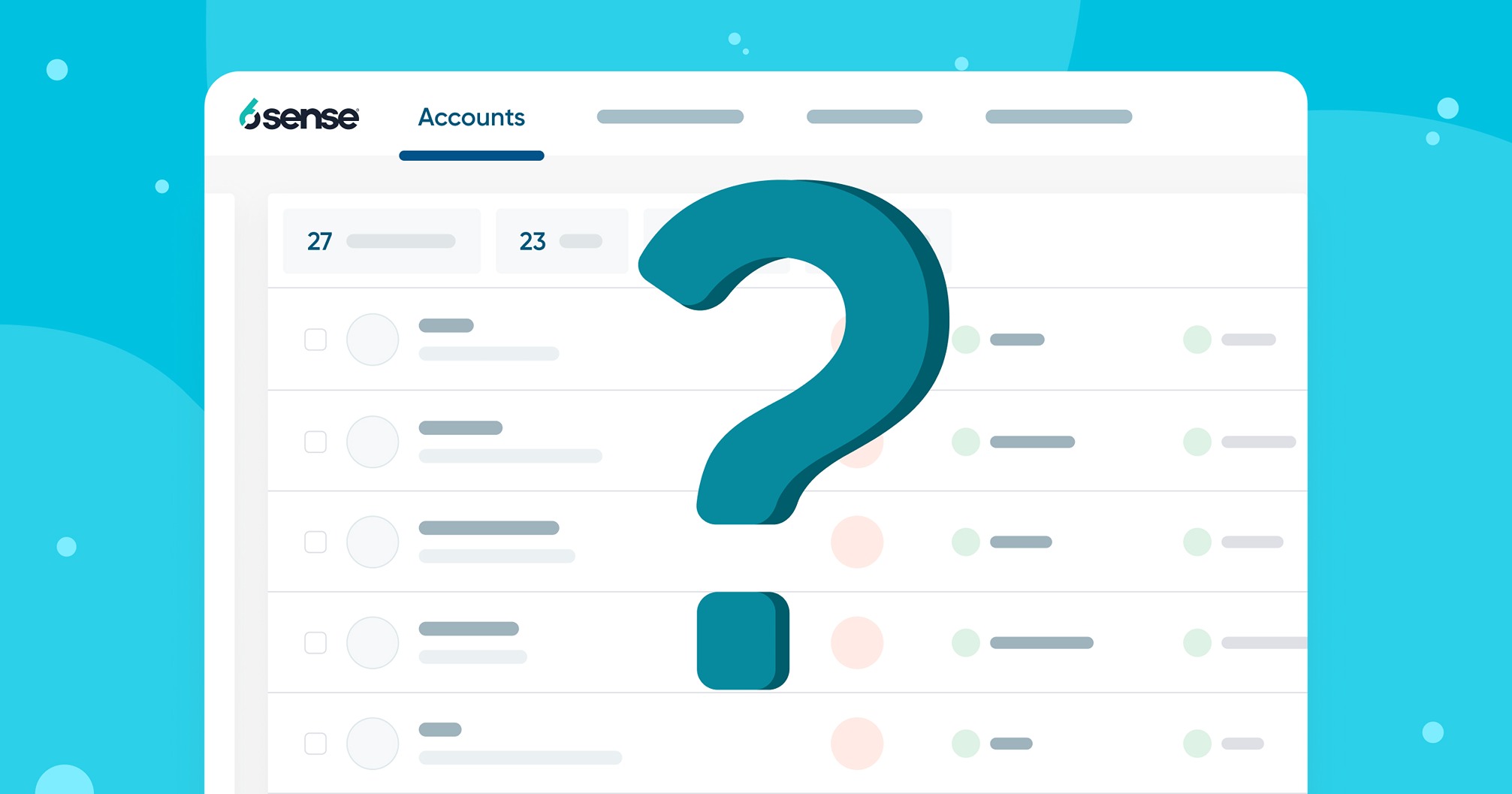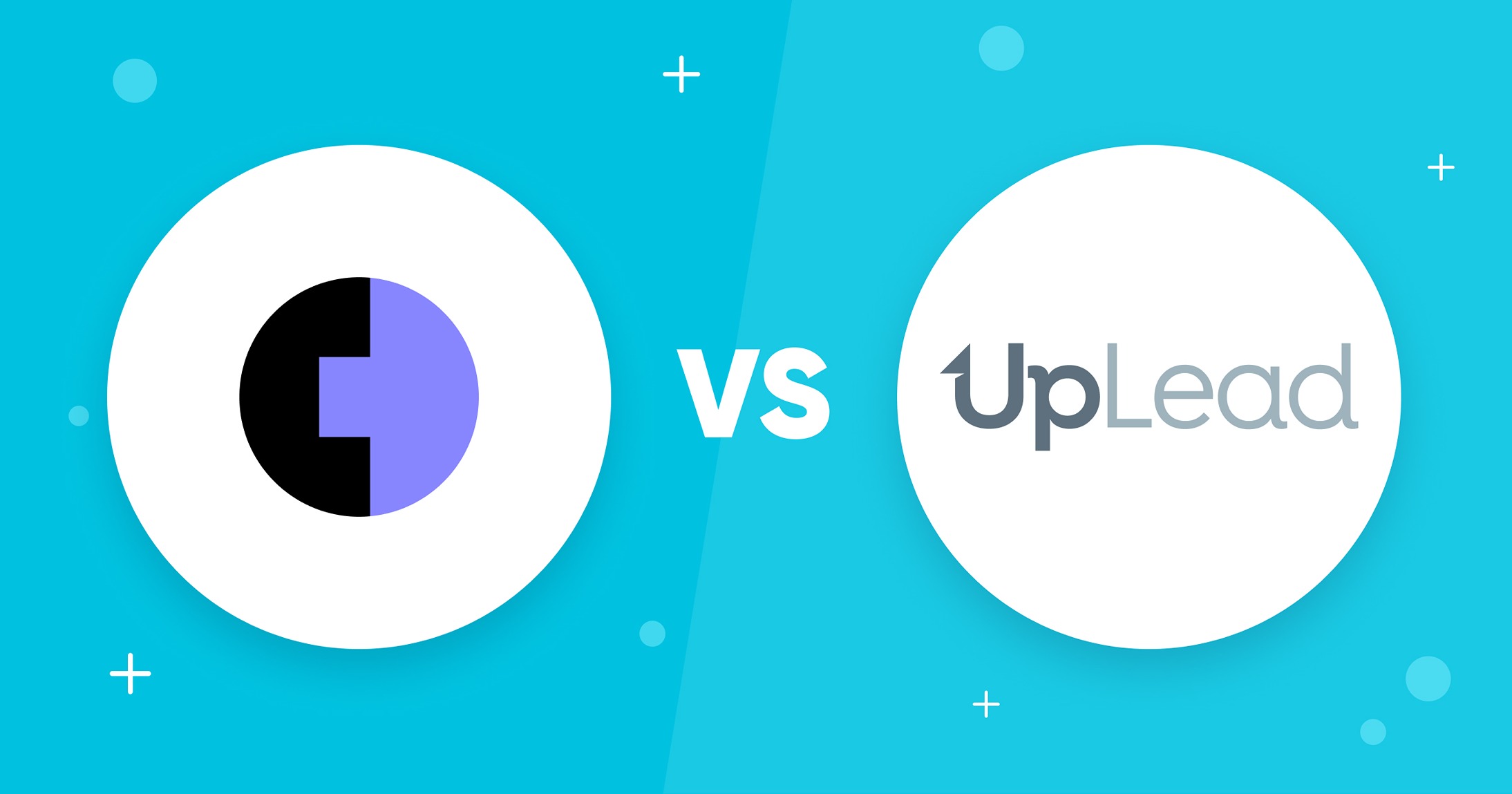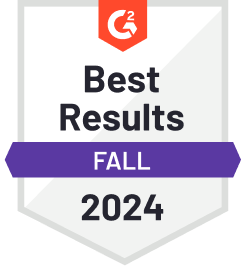Creating demand for your products and services is the key to business success. That’s why the marketing and advertising strategy called “demand generation” has become so popular with B2B and B2C brands.
Demand generation isn’t about manipulation or trickery. It’s about helping your target audience with a specific problem. It encompasses marketing strategies demonstrating value and advertising solutions that alleviate pain points.
Although there’s a lot of crossover between demand generation and lead generation, they’re separate concepts. Demand generation is a longer-term strategy that syncs with the buyer’s journey. It involves more touchpoints, channels, and campaigns.
When implemented correctly, demand generation can increase conversion rates and more customers.
Let’s get started.
What is Demand Generation?
Before getting into any specific strategies, it’s important to define demand generation clearly.
Demand generation is a marketing and advertising strategy that aims to increase awareness and interest in your brand. The focus should be on your products and services—what your business sells.
So, why is demand generation important for businesses?
The primary objective of demand generation is to create a predictable and repeatable sales pipeline. This pipeline should consistently attract prospects, nurture and qualify them into leads, and close sales.
Demand generation uses behavioral data to identify high-quality prospects. These prospective customers are then carefully nurtured until they become qualified leads. If this process is executed correctly, the sales team will receive sales-qualified leads to contact and close the deal.
Demand generation is an all-encompassing marketing and advertising strategy that utilizes all touchpoints and channels. Unlike other sales methodologies, it considers all stages and steps of the buyer’s journey. Demand generation works to generate new customers and upsell existing ones.
Demand Generation vs. Lead Generation
You’ll often see the terms demand generation and lead generation used interchangeably; some B2B marketers assume they’re the same thing. The truth is that they’re different sales methodologies with overlapping parts.
So then, what’s the difference between demand generation and lead generation?
Demand generation aims to increase awareness and demand for your brand and its products and services. On the other hand, lead generation is about converting that audience into actual leads.
A demand generation campaign involves creating content that builds brand awareness and interest in your products and services. A lead generation campaign involves converting prospects into leads using gated content, such as exclusive reports, whitepapers, and eBooks. You can also capture leads by hosting live events like webinars.
The key difference between the two is whether or not you’re asking for contact information. For example, some lead generation campaigns try to convert prospects into email subscribers by offering lead magnets. The business asks for your email address in exchange for gated content. On the other hand, demand generation offers an audience with no strings attached to content. No lead capturing is involved.
Top 7 Demand Generation Marketing Strategies in 2023
Demand generation includes several specific marketing and advertising strategies. These methods can increase brand awareness and demand for your products and services.
Below, we’ve listed the top 7 demand generation marketing strategies you can use in 2023.
1. Content Marketing for Demand Generation
Content marketing is one of the most essential demand-generation strategies. It involves creating valuable content that helps to solve your target audience’s pain points.
You can create several types of content to increase demand for your product or service. These are distributed over various marketing and advertising channels. These channels include social media, search engine optimization, email marketing, and paid advertising.
Here are some specific examples of content you can create to increase demand generation:
- Blog Posts: Articles for your website can help bring traffic from search engines such as Google. These blog posts should be informative, educational, and entertaining. They must be optimized for SEO and geared toward search intent. The focus should be solving your target audience’s problems and pain points.
- Videos: Video content can also help increase brand awareness and demand for your products and services. The most popular video content platform is YouTube; its search engine works similarly to Google’s.
- White Papers and eBooks: Whitepapers and eBooks are forms of gated content that can be used to convert prospects into leads. They’re commonly used to turn blog readers into email subscribers.
- Podcasts and Webinars: Podcasts and webinars are also forms of gated content. Like whitepapers and eBooks, they function as a way to convert website visitors into email subscribers.
- Industry Reports/Insights: Industry insights and reports are forms of thought leadership that can be used as gated content. These mediums can be used to flex your knowledge and expertise. You’ll increase your company’s authority and credibility within your industry.
Whatever type of content you choose to create, make sure it speaks directly to your target audience. Ensure that it gives your prospective customers value and helps alleviate their pain points.
2. Strong Digital Presence & SEO
The progression of the internet and social media over the last two decades has changed the marketing and advertising landscape. Most campaigns are now run online, so you must prioritize SEO and a strong digital presence.
Demand generation is all about getting out in front of your target audience. You should have a presence across several digital marketing channels to achieve that goal online. For starters, having a high-quality company website optimized for SEO, UI, and UX is essential.
If you’re unfamiliar with these three terms, here’s a brief explanation:
- SEO stands for search engine optimization. It’s a digital marketing strategy to improve a website’s search engine ranking.
- UI stands for user interface. It’s a web design concept that describes how a website looks. This includes the visual elements found on a site, such as buttons, icons, screens, and more.
- UX stands for user experience. It’s a concept focused on the flow and feel that the website visitor experiences while using a site. (Check out these user flow examples for inspiration.)
A website optimized for UI and UX is intuitive and easy to use. New visitors can navigate the site without issue. Your target audience will easily find a website optimized for SEO on Google.
Your blog posts should target long-tail keywords and bring in prospects with the right search intent. This will help attract leads with the highest potential to become paying customers. Addditionally, you can use marketing analytics tools which provide valuable insights into which keywords, channels, and content formats perform best.
You should also have a social media presence on LinkedIn, Facebook, Instagram, Twitter, and TikTok. Spend time creating a high-quality profile and posting engaging content to build a following. Social media marketing is one of the best ways to reach your target audience.
3. Invest in High-Quality Data
If you want your demand generation efforts to succeed, ensure you’re targeting the right people. Investing in high-quality data will ensure no time is wasted on inaccurate contact information. Tools like UpLead make it easy to find high-intent prospects that have the potential to become paying customers.
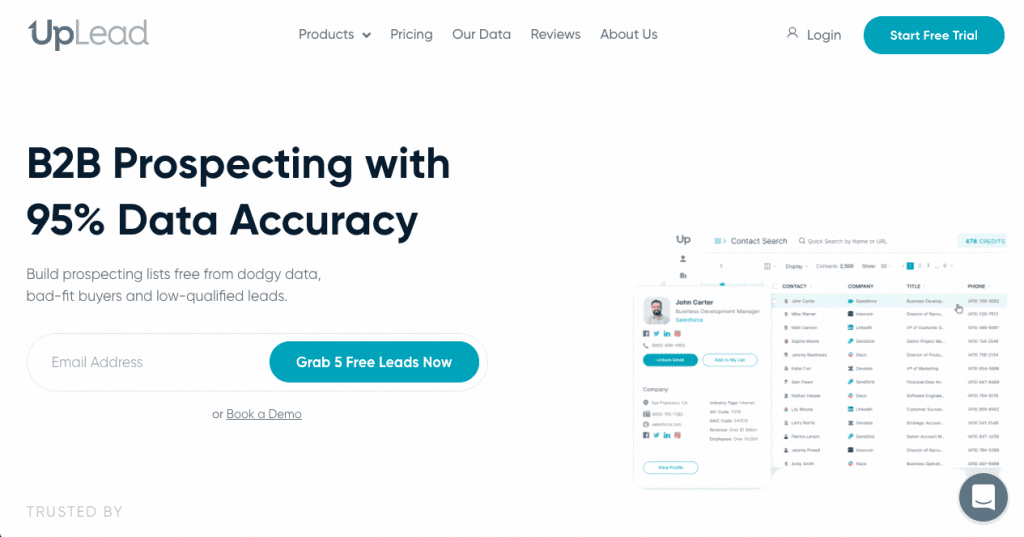
UpLead is a B2B lead generation platform that makes it easy to find your ideal prospects. It offers customers a large B2B contact database that can be used to create targeted prospect lists.
The UpLead database features over 160 million B2B contacts with email addresses, direct dials, and mobile numbers. There are 16+ million company profiles, 16,000+ technologies tracked, and a 95% accuracy guarantee backs all data.
You can sift through the contact database using over 50 search filters, including demographic, firmographic, and technographic data points. This includes technologies, business type, industry, location, number of employees, and annual revenue.
With UpLead, you can create a targeted prospect list for your demand generation campaigns. This will ensure you’re not wasting time and effort on contacts unlikely to become paying customers.
Lead generation doesn’t have to be all that painful. With UpLead, you can easily connect with high-quality prospects and leads to grow your company.
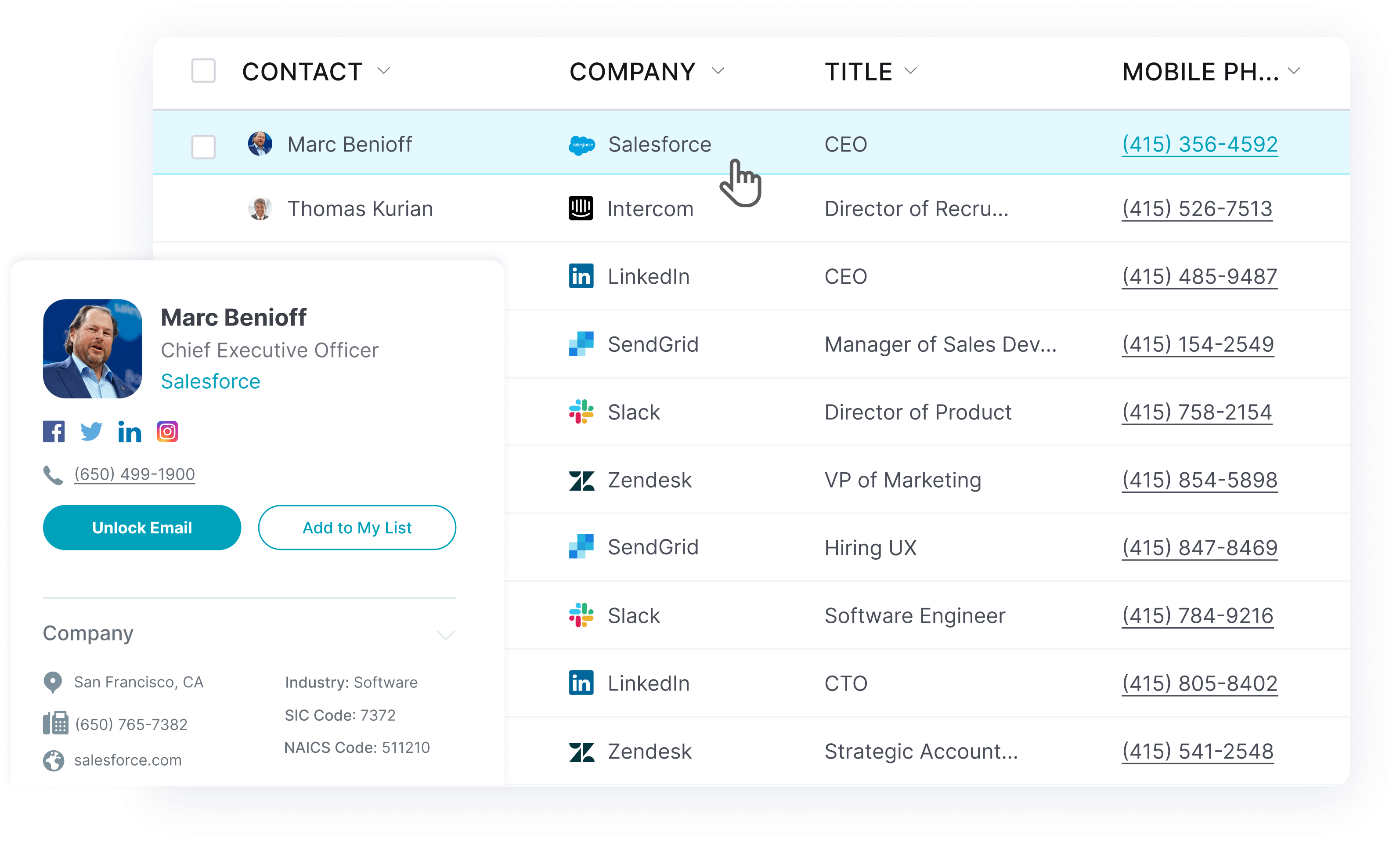
4. Account-Based Marketing
One of the best ways to generate demand for your brand is to run account-based marketing campaigns.
Account-based marketing (ABM) is a marketing strategy that targets a narrowly defined audience. It focuses on accounts—specific companies and individuals—instead of conventional B2B methods designed for a broader audience.
There are several benefits to using an account-based marketing approach. ABM shortens the sales cycle, aligns marketing and sales teams, improves customer retention, and helps you stand out. ABM sets you up for success from the beginning and will result in more sales further down the funnel.
According to an ITSMA benchmark survey, businesses using ABM experienced a 77% and 84% increase in revenue and pipeline growth, respectively. It’s a fantastic way to build rapport with key decision-makers.
The first step to developing an ABM strategy is to create a list of target accounts. These should be prospects that fit your ideal customer profile or buyer persona. It’s crucial to identify the key decision-makers at these companies. Access to a B2B contact database like UpLead makes this process much easier.
The next step is to target your selected accounts with SEO-optimized content and effective social media and email outreach. The key is to make sure it’s as personalized as possible. You should be focusing your content around the pain points of each account.
There are many account-based marketing tactics at your disposal. Other ideas include the following:
- Personalized videos
- Direct mail
- Paid advertising
- Customer testimonials and case studies
- Creative gifts
5. Develop Freebies for Demand Generation
Demand generation’s essence is creating valuable content that helps solve your target audience’s pain points. This is how you build interest in your brand and its products and services.
Creating freebies like downloadables, freemium tools, and free trials is a great way to convert prospects into qualified leads. This type of content should be an extension of your core marketing efforts. They’re a great way to qualify and nurture prospective customers.
You can create lead magnets for your blog posts to help convert website visitors into email subscribers. Try promoting events like webinars on social media and add attendees to your email list. You can also include freebies in your email outreach campaigns.
6. Run Targeted Paid Ads
Paid advertising is another way to generate demand. It allows you to have an online presence in places your target audience already visits. Getting your prospects to notice you is half the battle regarding demand generation.
There are several types of paid advertising. Depending on your audience, you may want to consider traditional channels like TV, radio, billboards, print, and direct mail. Digital advertising methods include pay-per-click (PPC), display, and programmatic advertising.
PPC ads can be an effective way to get your target audience’s attention. They allow your brand to appear for keywords on Google, Facebook, YouTube, and LinkedIn. Don’t forget to use the analytics tools provided by these platforms to track and measure your results.
7. Rack Up Social Proof
Demand generation is about improving your target audience’s trust in your brand. It’s important to appear credible if you want people to consider purchasing your products and services. One of the best ways to build trust is through social proof.
Social proof is a psychological concept that describes how the opinions of others can influence an individual’s decision. We see this social phenomenon always play out in the business world. Consumers make purchasing decisions based on a brand’s reputation, which is determined by what others say.
There are several ways to build social proof for your brand. Consider publishing high-quality case studies and testimonials of former and current customers. You can also request customer feedback to develop a strong online reputation. Reach out to important people in your industry and ask them to review your product or service.
Tips For Successful Demand Generation Marketing
Demand generation marketing is easier said than done. There are several key principles that you should abide by. We’ve listed four of them below.
Make Information Easily Accessible
Make it easy for your target audience to find information about your brand and its products and services. The more barriers they encounter, the less likely they will develop an interest in your company and what you offer. Your target audience should be able to find your website and contact information quickly.
Here are some helpful tips:
- Include call-to-actions (CTAs) within your blog posts
- Use an email signature/footer that includes a phone number and a link to your website
- Add your website, email address, and phone number in the description of your YouTube videos
- Ensure your social media profiles have the correct contact information
Know Who to Target
The success of your demand generation efforts largely depends on your ability to target the right audience. Make sure you’re not wasting time, effort, and money communicating with people who don’t fit your ideal customer profile. Focus your marketing efforts on audiences that have the potential to become paying customers.
There are several ways to find viable prospects suitable for your brand. Most of these require investing a considerable amount of time in researching prospects. Save yourself the hassle by using a B2B lead generation tool like UpLead.

UpLead allows you to search its extensive B2B contact database and build targeted prospect lists. Over 50 search filters include demographic, firmographic, and technographic options.
Lead generation doesn’t have to be all that painful. With UpLead, you can easily connect with high-quality prospects and leads to grow your company.

Align Internal Teams to Drive Growth
Successful organizations keep their sales and marketing teams on the same page. This unison makes it easier to close qualified leads and generate revenue.
It’s all about providing prospects with the best possible customer experience. Your marketing team should know precisely what happens after they pass leads to the sales team. Conversely, the sales team must know all marketing messages and materials.
Both departments should be supporting each other throughout the entire customer journey. When marketing and sales teams align, the sales cycle will be shorter, and close rates will be higher. This cooperation provides your company with a replicable process that will feed your sales pipeline indefinitely.
Track and Revise Your Approach
Last but not least: track and measure your demand generation efforts. Monitoring your results is the only way to know if you’re succeeding. Take advantage of various technologies like Google Analytics, Google Search Console, on-site social media analytics, and more.
Test and retest to find out what works.
Key Demand Generation Metrics to Track
It’s crucial to measure the performance of your demand generation campaigns. There are several key metrics that you should be tracking. We’ve listed five of them below.
1. Cost Per Acquisition (CPA)
Cost per acquisition (CPA) is how much it costs to acquire one paying customer. For example, you might run a pay-per-click advertising campaign on Google. Let’s say the price is $2 per click. If it takes 15 clicks to get a single customer, your CPA would be $30.
Your CPA should always be less than the money you make from the sale. If you only earned $25 from the example above, it’s unlikely to be worth the effort. However, you should also consider a customer’s value over your relationship’s lifetime. See customer lifetime value (CLV) below.
CPA is an important metric to track because it tells you how efficiently you generate new customers. Be sure to measure the CPA of your entire demand generation marketing efforts and specific channels.
2. Cost Per Lead
Cost per lead (CPL) is the cost of acquiring a single lead. This can be calculated by dividing the marketing and advertising campaign costs by the number of leads generated. For instance, you might run Facebook ads at a $3 per click. If it took 15 clicks to generate 5 leads, your CPL would be $9.
CPL is an important metric to track because it helps you understand your demand generation campaigns’ efficiency. It can also help you reassess your budget and determine how to allocate resources going forward.
3. Close Rate Per Channel
Close rate is a measure of how many sales-qualified leads become paying customers. This can be used for your entire demand generation efforts and specific channels. For example, you could calculate the close rate for your paid advertising campaigns.
Tracking your close rate can give you insight into your sales team’s efficiency. It can also help you uncover any channel-specific bottlenecks. You might be closing leads faster through one channel than another.
Here’s a simple formula for calculating your close rate:
Close rate = (deals closed) / (number of sales-qualified leads) x 100
4. Average Deal Size
Average deal size is the amount of revenue you generate per deal/sale/transaction. It’s calculated by dividing the total revenue generated in a period by the number of closed opportunities in that segment of time.
Average deal size can help you to understand how much the average closed deal nets are for your company.
5. Customer Lifetime Value (CLV)
Customer lifetime value (CLV) is your company’s total net profit from the average customer relationship. For instance, you might sell software priced at $5 per month. If the average customer signs up for one year and then decides to cancel, your CLV is $60.
CLV is a good way to measure the success of your sales process. It’s also an excellent way to gauge how well your team manages customer relationships. Remember: it generally costs less to retain an existing customer than it does to acquire a new one.
Your company should aim to increase its average CLV. Be sure to track CLV across all of your channels. This can give you a good understanding of what’s working and where to allocate resources.
Drive Demand Generation With UpLead
All demand-generation strategies are useless if you’re not targeting the right audience. Consider using a B2B lead generation tool like UpLead to help you find your ideal prospective customers.

UpLead is a B2B lead generation platform offering customers access to a large contact database. Businesses can use the web-based tool’s robust suite of features to create targeted prospect lists.
The UpLead database features over 160 million B2B contacts with email addresses. There are also direct dials and mobile numbers available. With over 16 million company profiles, 16,000+ technologies tracked, and a 95% data accuracy guarantee, UpLead makes it easy to find high-quality leads.
You can use over 50 search filters to sift through UpLead’s extensive contact database. Demographic filters allow you to identify key decision-makers. Firmographic filters, like annual revenue, location, and company size, make it simple to find the right companies. There’s also a technology tracking feature to help you identify what technology stacks companies are using.
Whatever your demand generation strategy, UpLead can be a valuable tool— especially regarding account-based marketing strategies. Finding an audience that fits your ideal customer profile on your own takes time and effort. Save yourself the hassle and let UpLead source the high-quality leads your company needs.
Lead generation doesn’t have to be all that painful. With UpLead, you can easily connect with high-quality prospects and leads to grow your company.

FAQs About Demand Generation Marketing
B2B demand generation is a marketing strategy that increases businesses’ demand for a company’s product or service. More specifically, it’s about interacting with a target audience to increase interest in B2B products and services.
Demand generation can be used for both B2B and B2C. However, it’s far more common and suitable for B2B. Demand generation is especially effective for products and services with longer sales cycles.
An example of demand generation is content marketing through various channels. This could involve creating blog posts on your website. Your target audience could find your blog posts on Google and develop an interest in your brand and its products and services. You could also post your blog content on social media platforms like LinkedIn and Facebook.
What You Need to Remember About Demand Generation
Demand generation is about engaging with your target audience and increasing interest in your company’s products and services. It involves several marketing and advertising strategies, including SEO, content marketing, PPC, social media, and more.
This ultimate guide has covered everything you need to know about demand generation marketing in 2023. Use the information outlined in this article to increase interest in your product and build lasting relationships with more customers.

